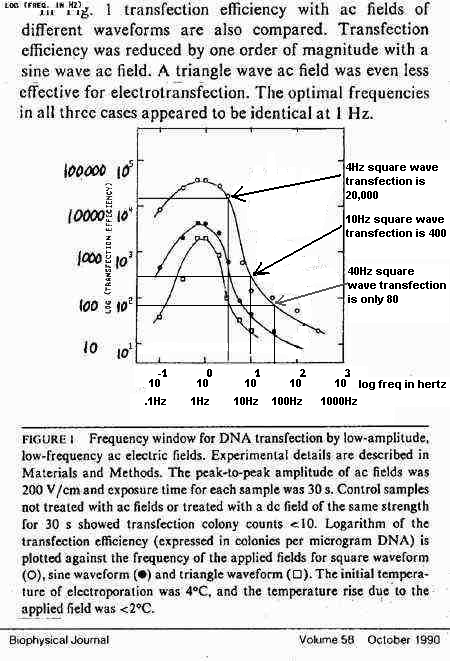| Transfection is a
term that
denotes the transference of a substance into a cell as a type of
"infection" by some outside-the-cell substance as
a result of electroporation. Electroporation denotes an abnormal
temporary porous state of the cell wall due to high electrical
potentials across it. Actually neither of these terms perfectly fit the
low electrical potential high absorption effect that happens from low
frequency blood electrification, but since they are close, and there
are no others, then we will use them. It is easier to say these terms
than high-absorption-effect. The useful graph below shows that
transfection from electroporation is frequency dependant, and that the
most affecting frequency is 1 hertz (1 cycle per second). Transfection is experienced when the subject after having done blood electrification feels "toxic" from doing 4 Hz blood electrification after ingesting medicine or any other strong substance, natural or synthetic. Actually there's just felt an amplified effect from the stuff ingested. Either way it is probably hard on the blood cells and so if the 4 Hz setting is used then it should only be used if no harsh substance has been ingested for a day previous. Unfortunately, the effectiveness of blood electrification against microbes pretty much parallels this transfection graph. The lower frequencies affect them negatively more than the higher frequencies. I added the notes on
this
graph to
clarify the frequencies and transfection amounts since the graph is
logarithmic.
Also the actual amounts of transfection at the main blood electrifier
frequencies of 4, 10, and 40 hertz are marked. At 10 hertz the
transfection is
only 2% of
the transfection at 4 hertz, and only .4% at 40 Hz.
Home |
